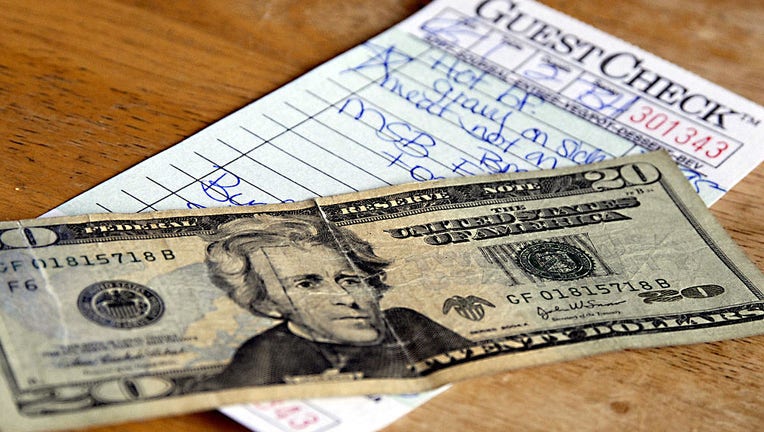Here's how inflation can show up on your restaurant bill

FILE IMAGE - A $20 bill is seen on top of a restaurant check in an undated image taken in Enterprise, Oregon. (Photo by Francis Dean/Corbis via Getty Images)
While lower prices for gas and cheaper used cars slowed U.S. inflation in August, food prices remain high — leaving a heavy burden on both American households and the restaurant industry.
Restaurants, in particular, have been hit hard throughout the COVID-19 pandemic due to public health challenges, labor shortages, and the high cost of food. Just over the past 12 months, wholesale food costs have risen 13.4%, according to research from the National Restaurant Association, a food service trade association and advocacy group.
Specifically, prices for eggs (+156%), butter (+61%), and flour (+39%) have skyrocketed, the association said.
Meanwhile, menu prices increased just 7.7% during this same time period, and the average restaurant’s pre-tax margins have fallen to around 1%, according to the association’s most recent report.
While restaurants may be reluctant to raise prices too much, OpenTable, a restaurant-reservation platform, recently shared a report on the sometimes hidden ways inflation can show up on the bill to stay afloat.
Between April 2021 and April 2022, the total number of U.S. restaurants that added service fees to guest checks increased by 36.4%, according to a report from the Wall Street Journal. The data came from Lightspeed, a global provider of point-of-sale software for retail stores and restaurants.
How inflation can show up on the restaurant bill
No more free refills: Increasing prices and worker shortages have put an end to free refills at many restaurants, according to OpenTable’s report.
Chicken impacts all: Instead of raising the price of chicken items by $2 to account for poultry being up 13% since last year, OpenTable said some restaurants opted to increase several dishes across the menu by $1.
No more free bread: Items like bread for the table, which may have once been free for diners — but not for restaurants — may now come with a small charge, the company said.
Shared plate charge: A possible shared plate charge gives the restaurant a way to charge for the service and clean up when splitting one meal into two, OpenTable noted.
Deposit credit: Sometimes, restaurants may require a deposit for larger parties, private areas, or in-demand times. Diners will see it applied to their bill or refunded to their credit card when they dine, OpenTable said.
Employee health & wellness: Competition for good restaurant workers is fierce these days, and applicants are often seeking healthcare — which is standard in other workplaces, OpenTable notes. Sometimes an employee "health and wellness fee" of 2% or 3% may show up on the bill to help cover such costs.
Kitchen appreciation fee: Since the kitchen team doesn’t always receive tips at the end of the night, kitchen appreciation fees can help to "level the playing field for all workers in the restaurant," OpenTable said.
COVID surcharge: Typically $1-$2, this fee is a way for the restaurant to recoup some of the expenses made due to the pandemic, including added patios and improved ventilation, the company said.
Overall, restaurants may be reluctant to raise prices despite the economic climate, OpenTable said. The company cited data showing that 89% of diners have noticed rising prices and many people are quick to complain about it.
OpenTable also noted how restaurateurs often get into the business because they want to take care of people, and "they want their hospitality to be accessible" no matter what is happening.
RELATED: Social Security cost-of-living increase could be largest in 40 years, estimate says
This story was reported from Cincinnati.

